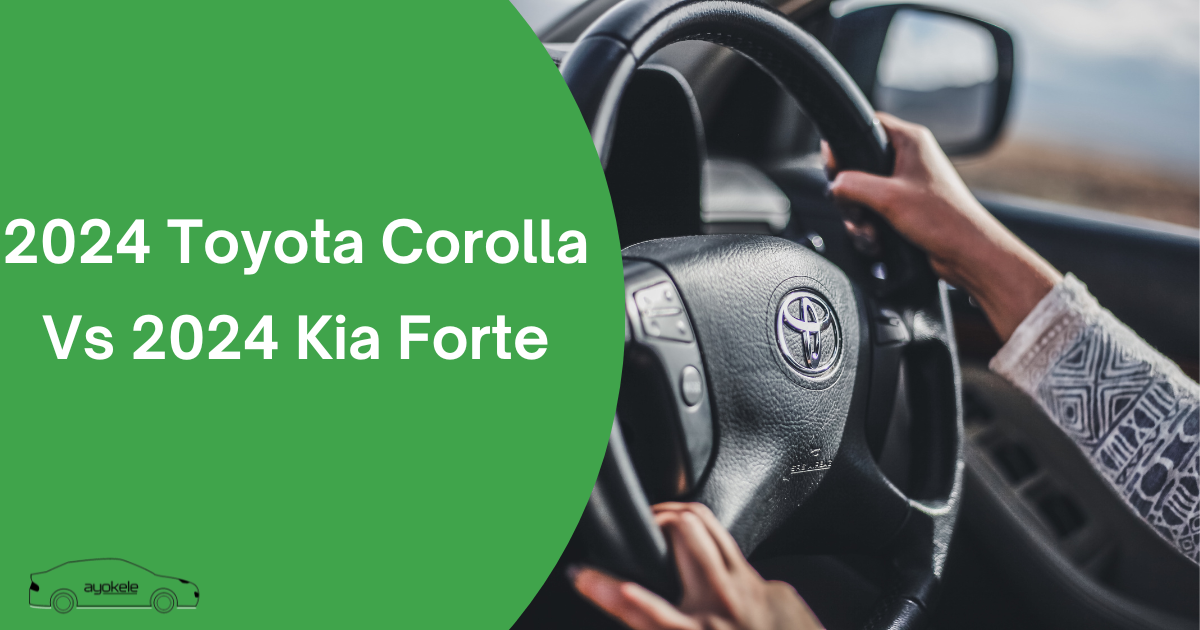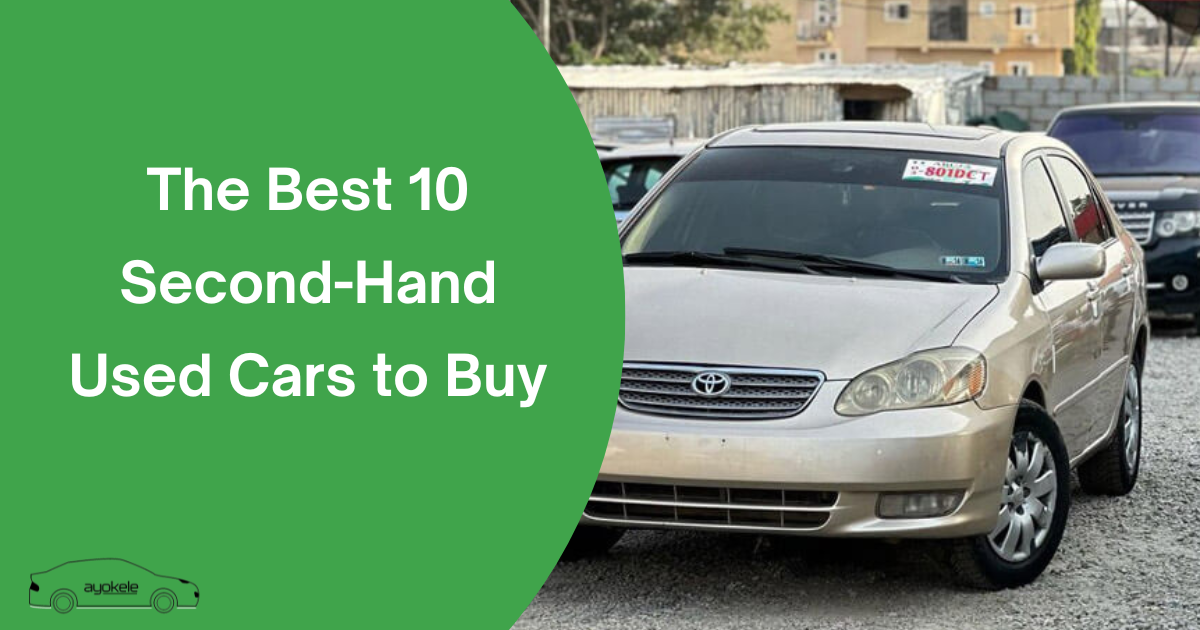When it comes to compact sedans, the Toyota Corolla and the Kia Forte are two names that consistently appear. Both have built reputations for reliability, value, and practicality, but they employ different strategies to win over drivers. If you’re shopping for a new compact car in 2025, you’re probably wondering: which one is better for you? Let’s dive deep into every aspect—design, performance, comfort, tech, safety, ownership costs, and more—to help you make the smartest choice.
First Impressions: Design and Curb Appeal
Toyota Corolla: The 2024 Corolla continues its tradition of understated, mature styling. Toyota has refined the Corolla’s appearance over the years, and the latest model is sleek, featuring sharp LED headlights, a wide grille, and a profile that appears more expensive than its price tag. The Corolla doesn’t scream for attention, but it’s undeniably handsome, especially in higher trims with alloy wheels and sportier accents. The paint options are classic, with a few bolder choices available for those who want to make a statement.
Kia Forte: The 2024 Forte, on the other hand, adopts a sportier, more youthful aesthetic. Kia’s “tiger nose” grille, aggressive front fascia, and available GT trim with red accents and dual exhaust tips give the Forte a more dynamic presence. The Forte’s lines are crisp, and the rear end is modern, with LED taillights and a slightly more coupe-like roofline. Kia offers a wider range of bold colors, appealing to younger buyers or anyone who wants a little more flair.
Interior Quality and Comfort
Toyota Corolla: Step inside the Corolla, and you’ll find a cabin that feels solid and well-crafted. Toyota uses soft-touch materials on the dash and doors, and the layout is clean and logical. The seats are supportive, with enough bolstering for long drives, and the driving position is comfortable for a wide range of body types. The rear seat space is adequate for adults, although taller passengers may find the headroom a bit tight due to the sloping roofline. The trunk space is average for the class, and the rear seats fold down for added cargo flexibility.
Kia Forte: The Forte’s interior punches above its weight. Kia has made significant strides in cabin quality, and the 2024 Forte is a testament to this. The dashboard design is modern, featuring a large touchscreen that is positioned high for easy visibility. Materials are a mix of soft-touch and hard plastics, but everything feels well-assembled. The seats are comfortable, and the GT trim offers sportier, more supportive seats with available synthetic leather and red stitching. The rear seat space is slightly better than that of the Corolla, particularly in terms of legroom, and the trunk is one of the largest in the segment.
Technology and Infotainment
Toyota Corolla: Toyota has stepped up its tech game in recent years. The 2024 Corolla comes standard with an 8-inch touchscreen, Apple CarPlay, Android Auto, and Amazon Alexa compatibility. The interface is straightforward, though not the flashiest. Higher trims add wireless charging, a premium JBL audio system, and navigation. The digital instrument cluster on some trims is crisp and easy to read. Toyota’s infotainment system is reliable, but some users may find it somewhat basic compared to rivals.
Kia Forte: Kia’s UVO infotainment system is one of the best in the business for this price range. The Forte comes standard with an 8-inch touchscreen, and higher trims get a 10.25-inch display. Apple CarPlay and Android Auto are standard, and the system is quick, with sharp graphics and an intuitive layout. The available Harman Kardon audio system is a treat for music lovers. Wireless charging, navigation, and a digital gauge cluster are available on higher trims.
Engine, Performance, and Driving Experience
Toyota Corolla: The 2024 Corolla is available with two main engine options: a 2.0-liter four-cylinder producing 169 horsepower and a hybrid model featuring a 1.8-liter engine and electric motor, which combine for a total of 138 horsepower. The standard engine is paired with a CVT (continuously variable transmission), which offers smooth operation but lacks sporty performance. The Corolla is tuned for comfort and efficiency, not speed. Acceleration is adequate for daily driving, but it won’t thrill you. The hybrid is even more focused on fuel economy, delivering up to 52 mpg combined, making it one of the most efficient cars in its class.
On the road, the Corolla feels composed and easy to drive. The steering is light, the ride is comfortable, and road noise is well-controlled. It’s not a car that begs to be pushed hard, but it’s confidence-inspiring and easy to live with. The SE and XSE trims add a bit of sportiness with paddle shifters and a firmer suspension, but the difference is subtle.
Kia Forte: The Forte offers more variety under the hood. The base engine is a 2.0-liter four-cylinder engine with 147 horsepower, paired with a continuously variable transmission (CVT). It’s similar to the Corolla’s base engine in terms of power and efficiency. The real fun comes with the GT trim, which features a 1.6-liter turbocharged four-cylinder producing 201 horsepower, paired with either a 7-speed dual-clutch automatic or a 6-speed manual transmission. The GT is genuinely quick for a compact sedan, with 0-60 mph times under 7 seconds.
The Forte’s ride is slightly firmer than the Corolla’s, especially in the GT, but it remains comfortable for daily driving. The steering is more responsive, and the car feels more agile in corners. The GT’s sport-tuned suspension and available larger brakes make it a true enthusiast’s choice in this segment.
Fuel Economy
Toyota Corolla: Fuel economy is a Corolla hallmark. The standard 2.0-liter engine returns up to 32 mpg in the city and 41 mpg on the highway, depending on the trim. The hybrid model is the real star, with up to 53 mpg city and 52 mpg highway. These numbers make the Corolla one of the most fuel-efficient non-hybrid and hybrid sedans you can buy.
Kia Forte: The Forte’s base 2.0-liter engine is also efficient, delivering up to 30 mpg in the city and 41 mpg on the highway. The turbocharged GT is thirstier, with ratings of around 27 mpg city and 35 mpg highway with the automatic transmission, and slightly lower with the manual. Still, these are solid numbers for a sporty compact.
Safety and Driver Assistance
Toyota Corolla: Toyota has made safety a priority. Every 2024 Corolla comes standard with Toyota Safety Sense 3.0, which includes adaptive cruise control, lane departure warning with steering assist, automatic emergency braking with pedestrian detection, lane tracing assist, and road sign assist. Blind-spot monitoring and rear cross-traffic alert are available on higher trims. The Corolla consistently earns top marks in crash tests from the IIHS and NHTSA.
Kia Forte: Kia also equips the Forte with advanced safety technology. Standard features include forward collision warning, automatic emergency braking, lane keeping assist, and driver attention warning. Higher trims add blind-spot monitoring, rear cross-traffic alert, adaptive cruise control, and safe exit warning. The Forte also scores well in crash tests, though the Corolla has a slightly longer track record for safety.
Ownership Costs: Reliability, Maintenance, and Resale Value
Toyota Corolla: The Corolla’s reputation for reliability is legendary. Toyota’s engineering means fewer unexpected repairs, and maintenance costs are among the lowest in the industry. Parts are widely available and affordable. The Corolla also holds its value exceptionally well, with some of the highest resale values in the compact car segment. Insurance costs are typically low, and Toyota’s warranty is competitive: 3 years/36,000 miles for the basic coverage, 5 years/60,000 miles for the powertrain, and 8 years/100,000 miles for hybrid components.
Kia Forte: Kia has made significant improvements in reliability, and the Forte is now regarded as a dependable choice. Maintenance costs are low, and Kia’s industry-leading warranty (5 years/60,000 miles basic, 10 years/100,000 miles powertrain) is a big selling point. Resale values have improved, but the Forte still lags behind the Corolla in long-term value retention. Insurance costs are similar to those of the Corolla.
Trim Levels and Pricing
Toyota Corolla: The 2024 Corolla is available in six trims: L, LE, SE, XSE, XSE Hybrid, and Hybrid. Pricing starts around $22,000 for the base L model and increases to approximately $28,000 for a fully loaded XSE or Hybrid. Toyota offers a wide range of options, from basic commuter models to sporty or eco-friendly vehicles.
Kia Forte: The Forte comes in FE, LXS, GT-Line, and GT trims. The base FE starts at about $20,000, making it one of the most affordable compact sedans. The GT-Line adds sporty styling and more features, while the GT starts around $25,000 and tops out near $28,000 with all options. Kia’s pricing is aggressive, and you often get more features for your money compared to the Corolla.
Real-World Driving: What’s It Like to Live With?
Toyota Corolla: Living with a Corolla is about peace of mind. It’s easy to drive, easy to park, and sips fuel. The ride is comfortable, and the cabin is quiet enough for long trips. The controls are straightforward, and everything functions as intended. The Corolla isn’t flashy, but it’s a car you can count on every day, year after year. Owners appreciate the low running costs and the fact that the car continues to run smoothly with minimal maintenance.
Kia Forte: The Forte is a bit more fun, especially in GT trim. It feels lively, and the tech is more advanced. The extra trunk space and rear seat room make it a better choice for families or anyone who hauls a lot of stuff. The ride is a bit firmer, but still comfortable. Kia’s warranty gives extra peace of mind, and the car feels more modern inside and out. Owners appreciate the value for money and the sporty touches.
Pros and Cons
Toyota Corolla Pros:
- Legendary reliability
- Excellent fuel economy, especially for a hybrid
- High resale value
- Standard safety features
- Comfortable ride
Toyota Corolla Cons:
- Not very exciting to drive
- Rear seat headroom is tight
- Tech is good, but not class-leading
- Pricier than some rivals
Kia Forte Pros:
- Sporty styling, especially the GT
- More rear seat and trunk space
- Advanced infotainment system
- Lower starting price
- Long warranty
Kia Forte Cons:
- Resale value is not as strong as the Corolla
- The base engine is less powerful
- Ride can be firm in GT
- Some interior materials feel cheaper in lower trims
Which Should You Buy?
If you want a car that will never let you down, holds its value, and is cheap to run, the Toyota Corolla is the obvious choice. It’s the safe bet, the car you buy when you want to forget about car problems and drive. The hybrid model is especially appealing if you want to save on fuel.
If you’re looking for a car that’s a little more fun, offers more space, and comes with better tech for the money, the Kia Forte is hard to beat. The GT trim is a true enthusiast’s bargain, and even the base models offer a lot of features for the price. Kia’s warranty is unbeatable, and the Forte’s styling is sure to turn more heads.
Both cars are excellent, and you can’t go wrong with either. The choice comes down to what you value most: bulletproof reliability and resale (Corolla), or sporty style, tech, and value (Forte).
Final Thoughts
The compact sedan segment is more competitive than ever, and both the 2024 Toyota Corolla and 2024 Kia Forte are at the top of their game. The Corolla is the gold standard for reliability and efficiency, while the Forte offers more excitement and features at a lower price. Test drive both, compare the trims and features that matter most to you, and you’ll find the right fit for your needs.
Regardless of which one you choose, you’re getting a car that’s safe, efficient, and ready for years of dependable service. Happy driving!




